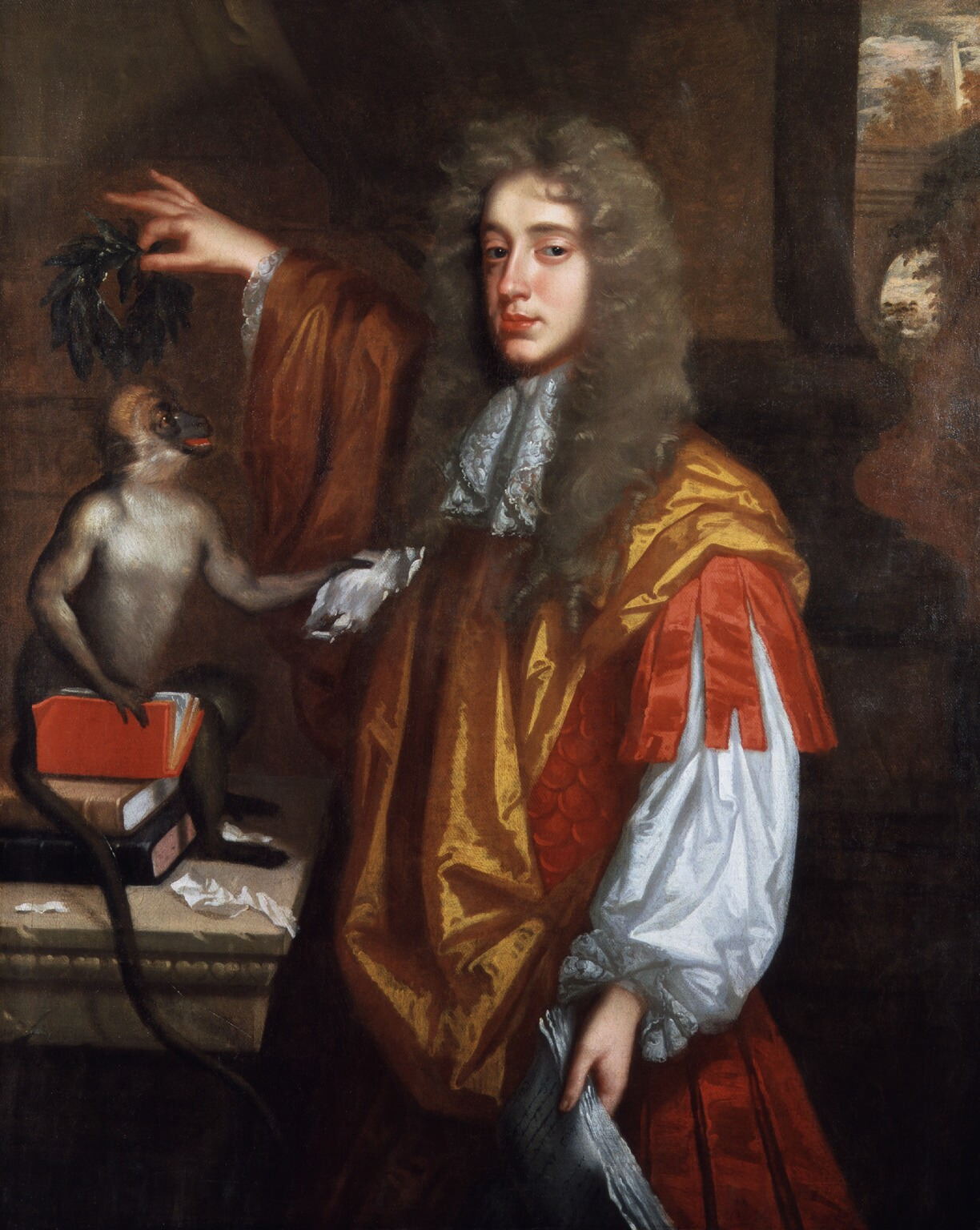His ascendancy came with the English Restoration. The English had suffered through some years of strict Puritan government under Cromwell and when "the merry monarch", Charles II, opened the theatres and started spawning illegitimate offspring the time was ripe of the libertinistic rake to increase his appearance. As theatres introduced women on stage the rake would figure as a role model of enterprising masculinity on stage in the many restoration comedies. The rake reflected the king in many ways; he represents a force above the puritan society, one who presents a wild, primitive force in a polite, civilised dressing. The rake would be, as McGirr puts it, a-social (above society) rather than antisocial (opposed to it).
 |
| John Wilmot, 2nd Earl of Rochester, the model for Dorimant, the rake in George Etherege's Man of Mode |
Like in many modern societies, male honour was what mattered for the rake. This should always be present and defended, and so the rake would disregard debts to the rising middle classes, fight offenders wither with wit or sword and ravish women. The three weapons of the rake would therefore be intimately tied to his masculinity, the phallus and the phallic sword and tongue.
However, the appeal of the rake lessened towards the end of the 17th century. Charles failed to produce a legitimate heir and the capital was struck by plague and fire. John Wilmot, 2nd Earl of Rochester (portrayed by Johnny Depp in The Libertine), famous for his rakish lifestyle, died of alcoholism and a number of venereal diseases. Thus the tragic aspects of the rake became more apparent and the reformation of the rake became the agenda of the day. Although Mary Davy's The Accomplish'd Rake and Hogarth's series Marriage a la Mode suggested that the rake would have to be forced into reform, die or go mad Colley Cibber's Love's Last Shift and Samuel Richardson's hugely popular Pamela illustrate the contemporary idea that the rake could be reformed by a virtuous woman and would then be the best possible husband.
Of course there were more damning depictions of the rake throughout the 18th century. In Richardson's Clarissa the rake Lovelace is killed in a duel and in Sir Charles Grandison and Pope's mock-epic Rape of the Lock the rakes are subjected to ricidule before they end up inconsequential. With the extended focus on morality and the rise of the cult of sensibility towards the end of the 18th century the rake had been reformed and rewritten from the personification of the aggressive, conquering masculinity to that of a failed one on the margins of society.
Source: Elaine M. McGirr, Eighteenth-Century Characters: A Guide to the Literature of the Age (Houndsmills: Palgrave Macmillan, 2007)
<3 u
ReplyDeleteLoveth thee too! Thanks for visiting!
ReplyDelete